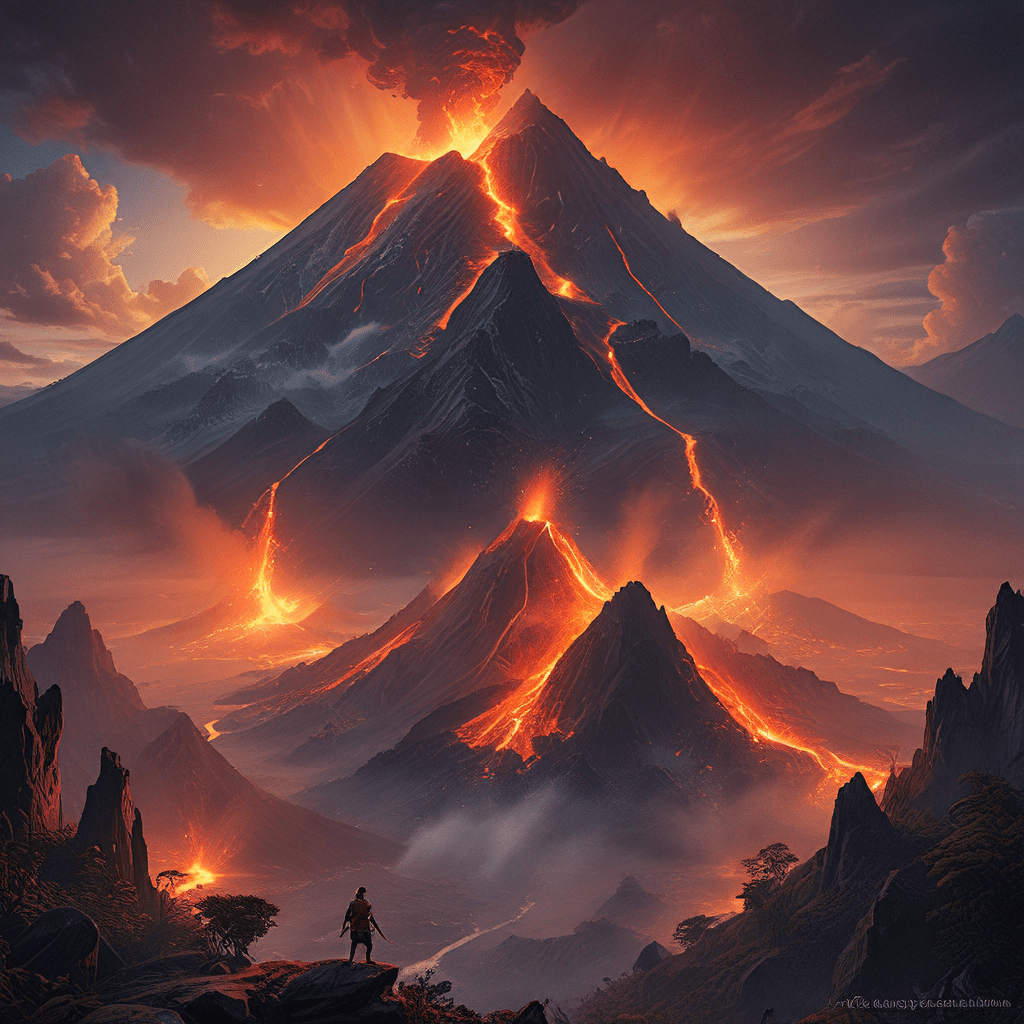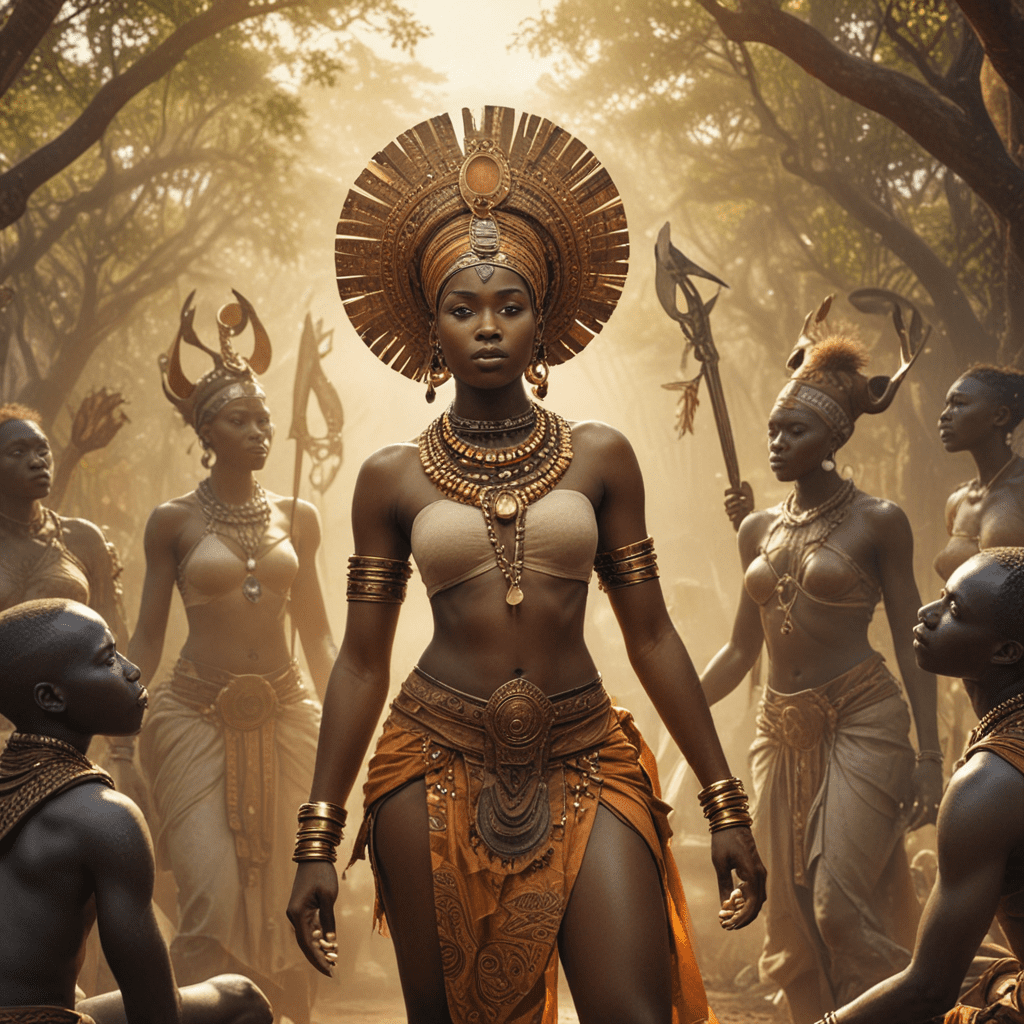Filipino Mythology and the Power of Volcanoes
The Philippines, an archipelago of over 7,000 islands, is known for its stunning beauty and its active volcanoes. These geological wonders have played a significant role in shaping the landscape and the culture of the Filipino people. From the fertile soil that sustains agriculture to the awe-inspiring eruptions that have shaped the land, volcanoes hold a special place in Filipino mythology.
Filipino mythology is rich in stories about the origins of the world, the creation of human beings, and the forces that govern nature. Many of these myths feature volcanoes as powerful symbols of both creation and destruction. They represent the awe-inspiring power of nature and its ability to bring both life and death. These stories serve as a reminder of the interconnectedness of humans and the natural world, and how even the most powerful forces can be both benevolent and destructive.
The Volcano as a Source of Life and Destruction
Volcanoes in Filipino mythology are seen as both sources of life and destruction. The fertile soil created by volcanic ash provides sustenance for crops and supports a thriving agricultural economy. However, volcanic eruptions can also be devastating, destroying homes, crops, and even entire villages. This duality is reflected in the myths that surround these natural phenomena.
Filipinos view some volcanoes as sacred mountains, the homes of deities or spirits. These deities can be beneficent, bringing prosperity and good fortune, or they can be angry and vengeful, unleashing their wrath upon those who disrespect them. This duality is reflected in the stories that surround the volcanoes, with tales of both blessings and curses from the deities who reside within them.
The Mythical Origins of Volcanoes
Various myths try to explain the origin of volcanoes in the Philippines. One common belief suggests that volcanoes are the result of the anger of gods or spirits. These deities might be angry at the actions of humans or at the imbalance in the world. Their rage manifests itself as volcanic eruptions, a powerful reminder of the consequences of disrespecting the natural order.
Another myth suggests that volcanoes are the breathing holes of a giant creature, known as a "bakunawa," which lives beneath the earth. This mythical beast is said to be so massive that its breath creates eruptions that shape the landscape. The myth serves as a cautionary tale, reminding people that the earth has its own mysteries and forces beyond human control.
Mount Apo: The Home of the Gods
Mount Apo, the highest mountain in the Philippines, is revered as a sacred mountain. Legend states that it is the home of the "diwata," or spirits, who are responsible for protecting the natural world and its people. The mountain is said to be a place of great power and spiritual energy, where humans can connect with the supernatural realm.
It is believed that the mountain's slopes are home to numerous spirits, each with their own domain and influence. These spirits are said to guard the forest, the rivers, and the land, ensuring that the natural world remains in balance. The people of the region show respect for these spirits by offering sacrifices and avoiding disrespectful behavior.
Mayon Volcano: The Maiden of Fire
Mayon Volcano, known for its perfectly conical shape, is often referred to as the "Maiden of Fire." Filipino folklore tells the story of a beautiful princess named Magayon who fell in love with a young warrior named Ulap. However, the princess's father, the chieftain of the tribe, was opposed to the union. He decided to sacrifice Ulap to the gods, prompting Magayon to leap into the flames of the volcano. The volcano erupted in fury, and the lovers, united in death, were transformed into the majestic mountain that we see today.
The myth serves as a reminder of the power of love and sacrifice, but also the consequences of defying tradition and authority. The mountain's fiery nature serves as a reminder of the passions that can consume us, and the destructive power of unrequited love.
The Role of Volcanoes in Creation Myths
Volcanoes are central to Filipino creation myths, symbolizing the birth of the islands and the emergence of life itself. One prominent myth tells the story of how the first humans, Malakas and Maganda, were created from a bamboo stalk split open by a mythical bird, the "tikbalang." This bamboo stalk, according to the myth, originated from the slopes of a volcano, signifying the connection between volcanic activity and the beginnings of humanity.
Another myth describes how the islands of the Philippines were formed from the tears of a heartbroken goddess. Her tears, falling into the sea, created the landmasses that we know today. This myth highlights the emotional connection between the natural world and the divine, and the role of volcanoes in shaping the landscape. It also emphasizes the importance of honoring nature and respecting its power.
Volcanoes as Portals to the Underworld
Volcanoes are seen as portals to the underworld in many cultures, and Filipino mythology is no exception. The eruptions are often interpreted as the anger of the spirits that reside in the underworld, or as a sign that the underworld is trying to communicate with the living. This belief is reflected in the stories of "engkanto," or mythical creatures, who are said to dwell in caves and forests near volcanoes.
These creatures are often believed to be guardians of the underworld, and their presence serves as a reminder of the power that lies beneath the earth. They are also seen as intermediaries between the human world and the spirit world, who can grant wishes or inflict curses depending on their mood.
Theories on the Influence of Volcanic Activity on Filipino Mythology
The prevalence of volcanic imagery in Filipino mythology is likely a direct result of the archipelago's volcanic landscape. The constant threat of volcanic eruptions, along with the awe-inspiring beauty of these natural wonders, has played a significant role in shaping the cultural beliefs and practices of the Filipino people.
Anthropologists believe that the people who first settled in the Philippines were deeply influenced by the environment around them. The experience of volcanic eruptions, with their destructive power and subsequent growth of vegetation, likely inspired many of the creation myths and stories that have been passed down through generations.
The Enduring Legacy of Volcanic Mythology in Filipino Culture
Volcanic mythology remains an important part of Filipino culture today. Many festivals and rituals are still practiced, especially in areas near volcanoes, to honor the spirits that are believed to reside in these mountains. The stories of volcanoes are passed down through generations, serving as a reminder of the power of nature and the importance of respecting the environment.
Volcanic imagery is also present in Filipino arts and literature. From the intricate carvings on the facades of churches to the vibrant colors used in paintings, volcanic themes are woven into the fabric of Filipino culture. This enduring legacy ensures that the stories of the mythical volcanoes of the Philippines continue to inspire and fascinate people for generations to come.
FAQs
What are some common Filipino beliefs about volcanoes?
Filipinos believe that volcanoes are powerful spiritual entities, often home to gods or spirits. They are viewed as sources of both life and destruction, with eruptions interpreted as expressions of divine anger or the presence of mythical creatures.
How are volcanic myths used in Filipino culture?
Volcanic myths are incorporated into various cultural practices such as festivals, rituals, and artwork. These stories serve as reminders of the power of nature and the importance of respecting the environment. They also contribute to the unique cultural identity of the Filipinos.
What is the importance of volcanoes in Filipino mythology?
Volcanoes play a central role in shaping Filipino mythology, serving as symbols of creation, destruction, the supernatural, and the connection between humans and the natural world. They are woven into stories about origins, gods, spirits, and the relationship between nature and humanity.



